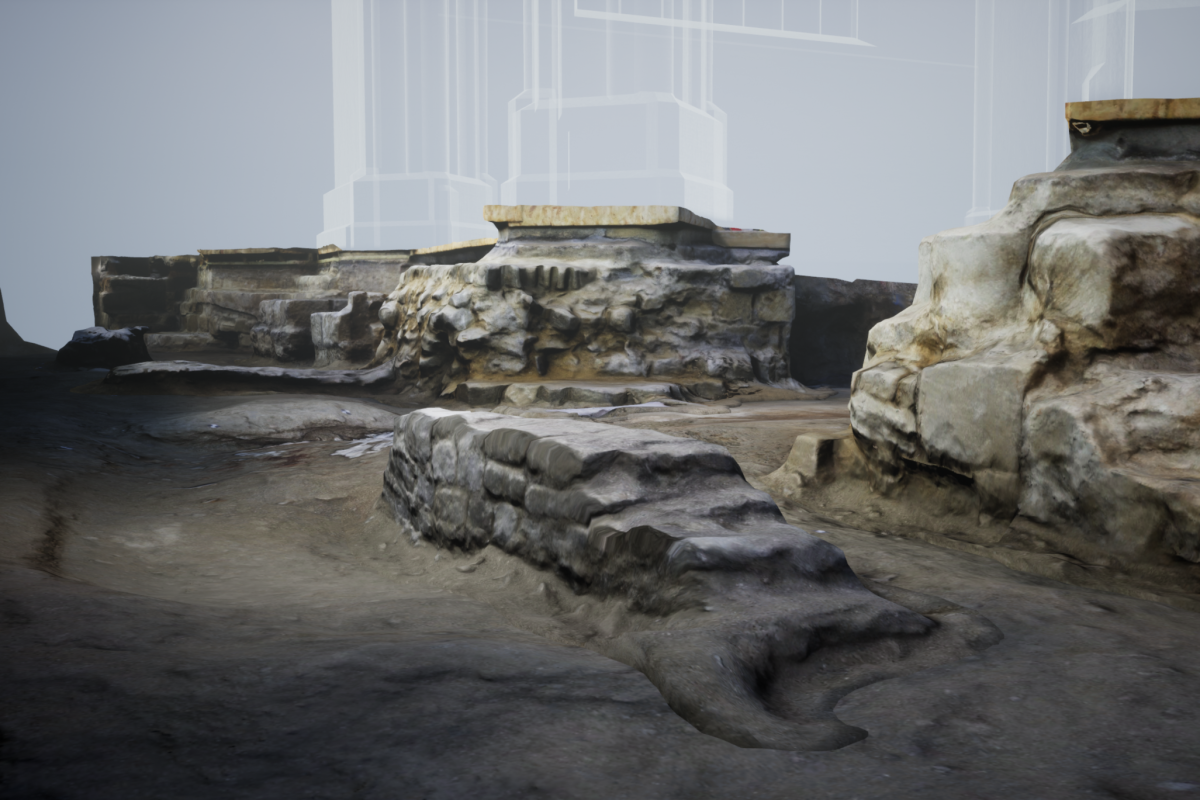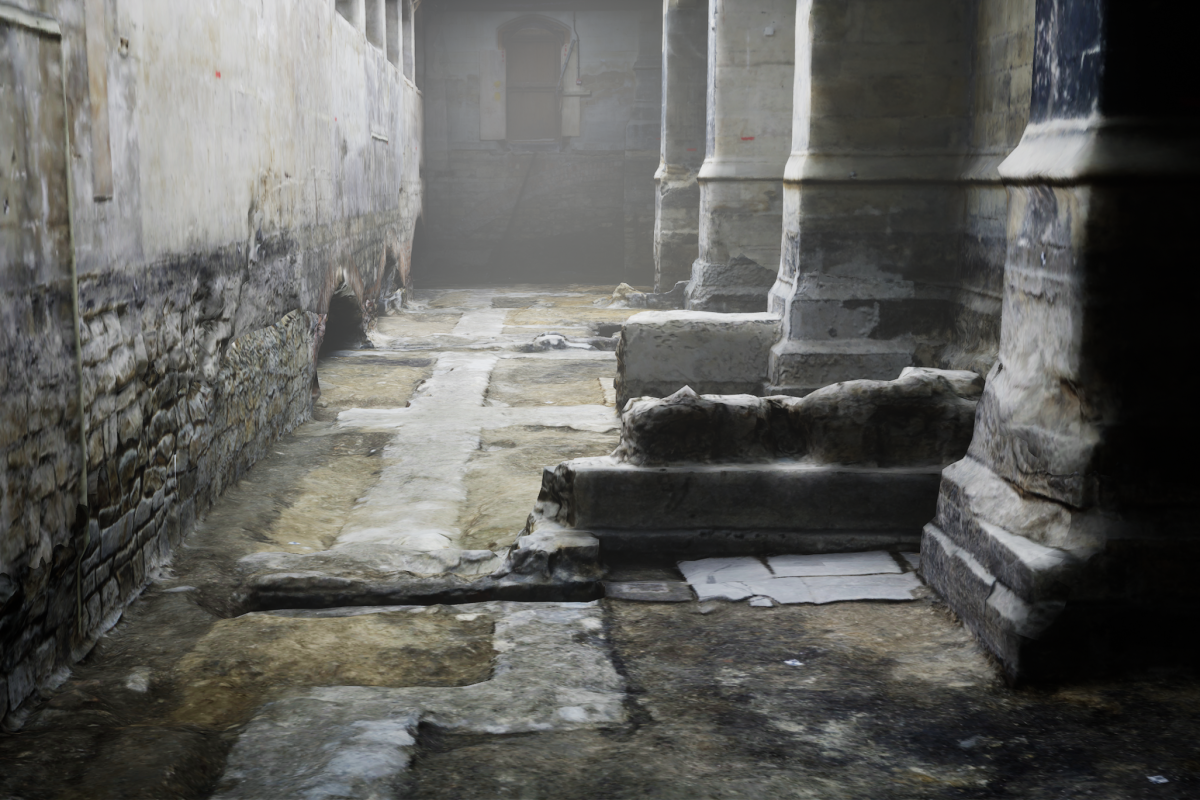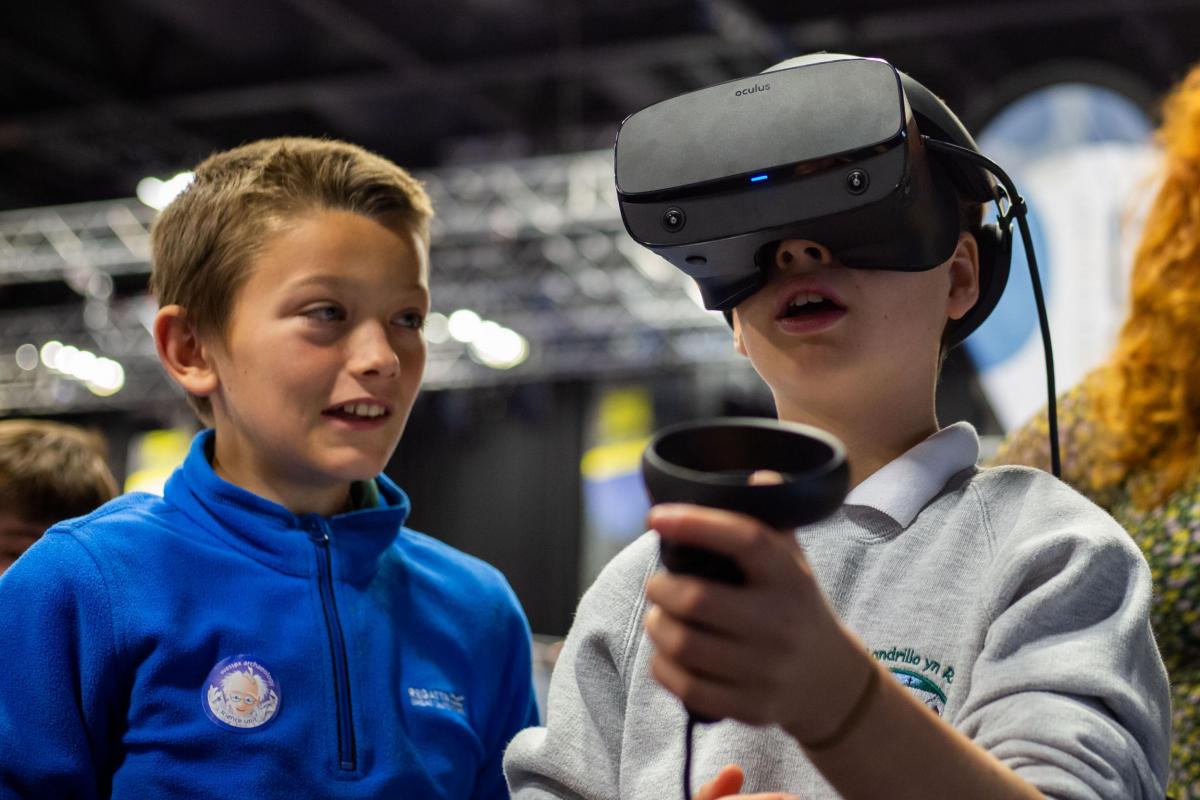Wessex Archaeology’s Studio team are now creating Virtual Reality (VR) experiences based on real archaeological sites. This allows a much wider audience to visit a fully immersive digital version of archaeological sites. They can explore places that they would otherwise not be able to visit for safety reasons, and in this example they even have the opportunity to see the site in a way that the archaeologists didn’t get to see it in real life!
Recording below Bath Abbey
As part of The Bath Abbey Footprint Project Wessex Archaeology excavated and recorded beneath the abbey floor. In order to facilitate faster renovation and reopening areas to the public, the site was excavated in several stages, with only a small area under excavation at any one time. As well as using traditional recording systems, the archaeologists have recorded everything in 3D using a process called photogrammetry.


This is a process we often use for detailed deposits such as burials. Our archaeologist are very experienced with this data capture technique, but this was the first time they had ever recorded a whole site in this way. Despite often difficult working conditions on site, with low level lighting and restricted access to some places, each area was carefully captured in high resolution 3D. The separately recorded areas and phases of the site were then processed and painstakingly combined by our in-house geomatics team. This created a very large and highly detailed dataset. For the The Parochial Church Council of the Ecclesiastical Parish of Bath Abbey with St James we were commissioned to create a VR experience, but photogrammetry models are made up of millions of faces, which makes them too big and complicated to run reliably in VR!
From recorded reality to virtual reality
To make this vast data set manageable our Studio artists have re-sampled areas to different levels of detail (poly counts) and then recombined them in a gaming engine environment. The level of important details has been maintained and enhanced by a process called “baking”. By baking, the details of the surface that were lost when reducing the density of the mesh, are re-projected from the high poly model. This same technique also transfers the coloured photographic textures to the model.




The results are great and the differences between the textured low poly and original high poly are almost imperceptible. With all the excavations now back together in a manageable file, we have created a VR environment which shows the site as the archaeologists had never seen it before, in its entirety!
Experience a real archaeological site
This VR experience allows people to virtually examine a real archaeological site for the first time. The Bath Abbey site has a wealth of archaeological features to explore, including historic architectural features and burials. The excavations have been located within a ghost copy of the abbey building, with the pillars and windows added provide the user with a sense of place, scale and orientation. The environment is very atmospheric with low level lighting, but people should be able to find their way around easily using the jump navigation interface and the virtual torch!
To help the audience understand the heritage features they are discovering, pop up information points are supplied. These give text and imagery insights into some of the many discoveries made during the excavations, including both Saxon and Roman remains.


This experience was first shown at the Digital Past conference in February 2020, which was held in Aberystwyth Arts Centre, where it met with great acclaim. This is the first time we have created a VR experience of an archaeological site as it looks during excavation. Our usual VR experiences show what sites would have looked like in the past, not the present, using Heritage Interpretation to reconstruct places now lost by the march of time. We really hope you like this new, and rather different experience. This VR experience will be on display at the Abbey in a new exhibition space, once the renovations are complete.



Understanding the past
As a leading heritage company, Wessex archaeology is uniquely placed to create this kind of experience, giving a wider audience the opportunity to visit the site in complete safety. We excavate hundreds of archaeological sites every year and have the capability to record them in 3D while we are on site. Wessex Archaeology employs an impressive array of specialists, who have a wide range of survey and digital data enhancement skills. We also have a great wealth of experts who understand and help interpret the archaeological remains.
The aim of our reconstruction work is to create a quality product that is as accurate as possible and makes heritage accessible to a wide audience, raising awareness and bringing added value to our client’s projects as well as providing real community legacy products.

Bringing the past to life
We have had great feedback from the thousands of people who have tried our VR experiences. Whether you are five years old or an octogenarian, we hope this unique experience will spark your enthusiasm for archaeology as well as Virtual Reality!






